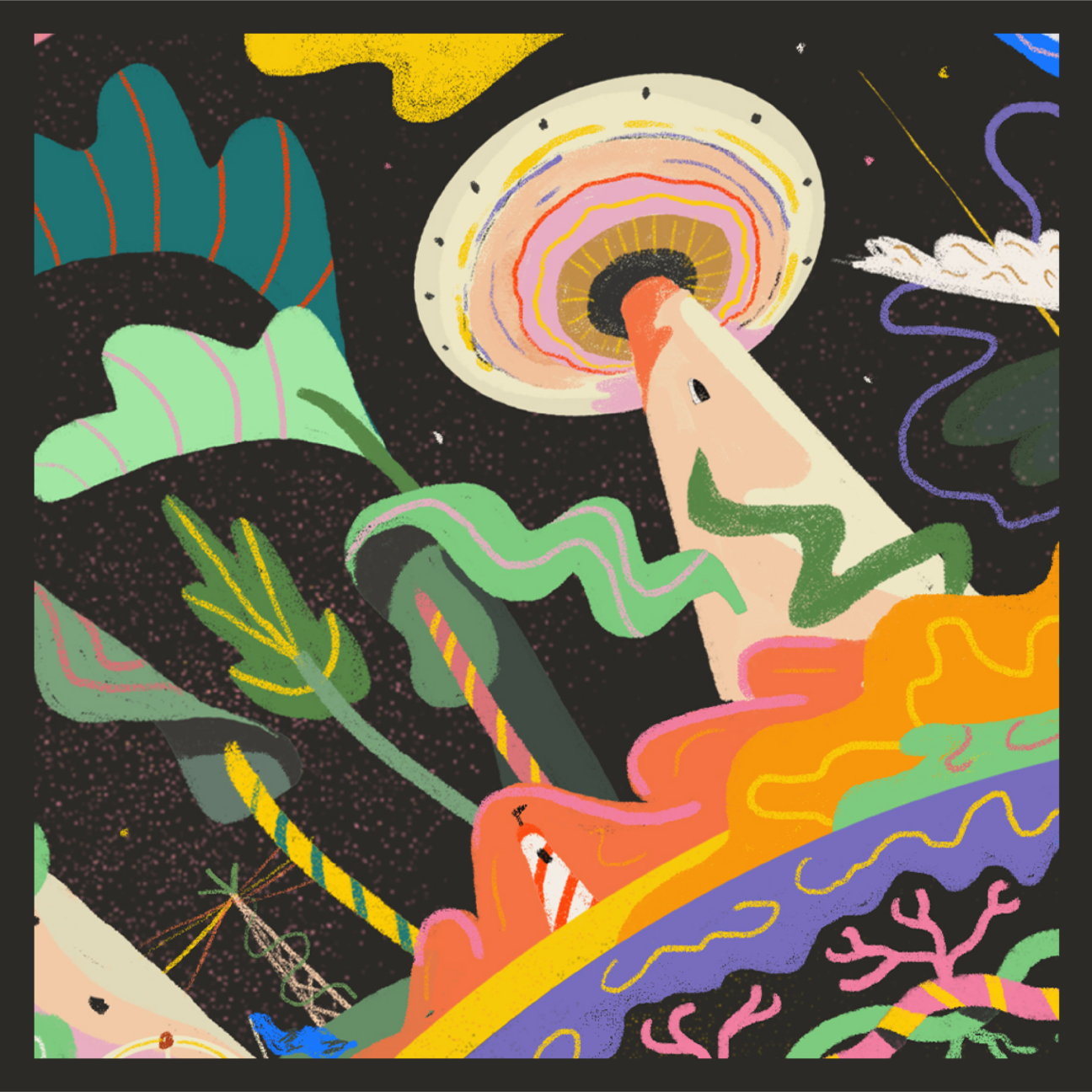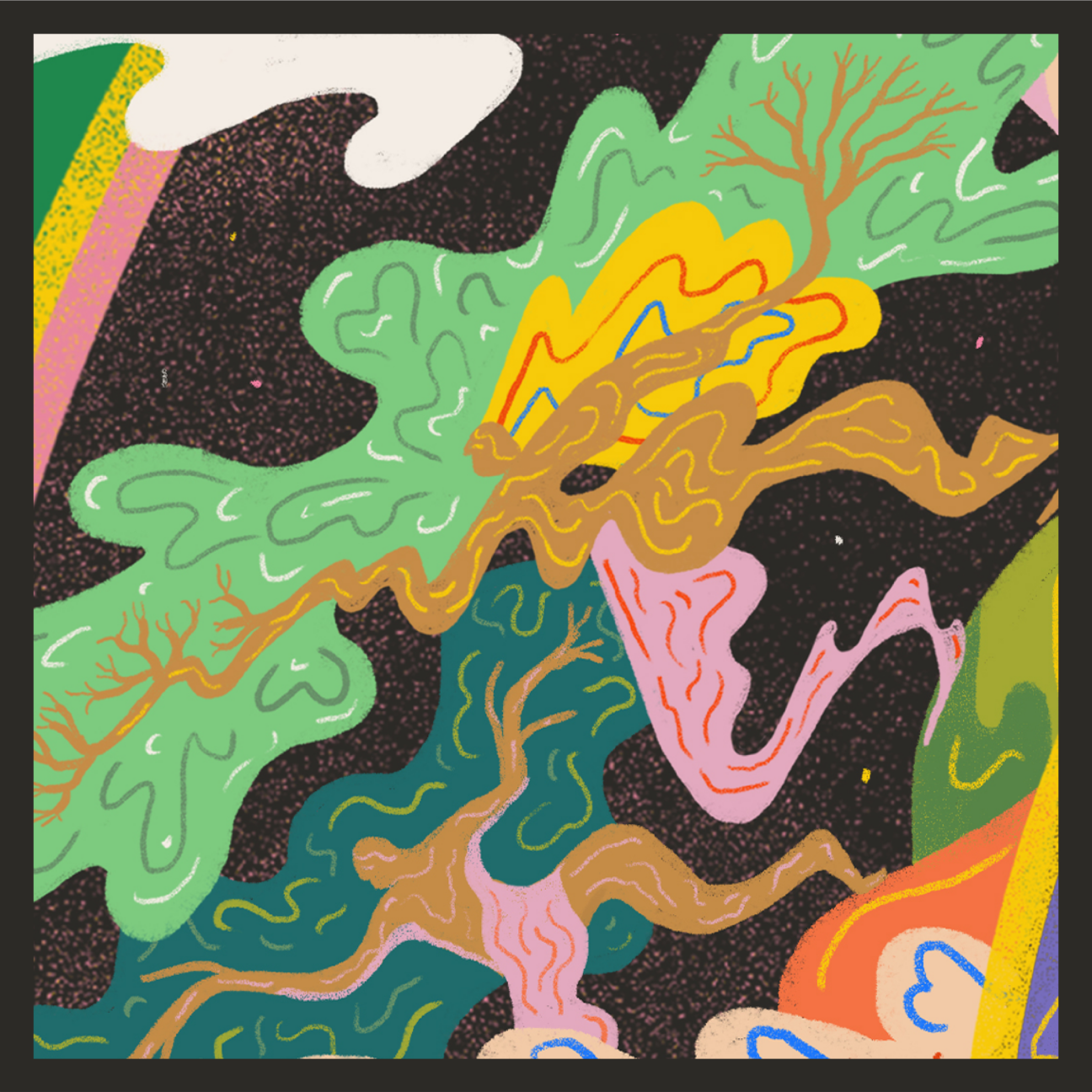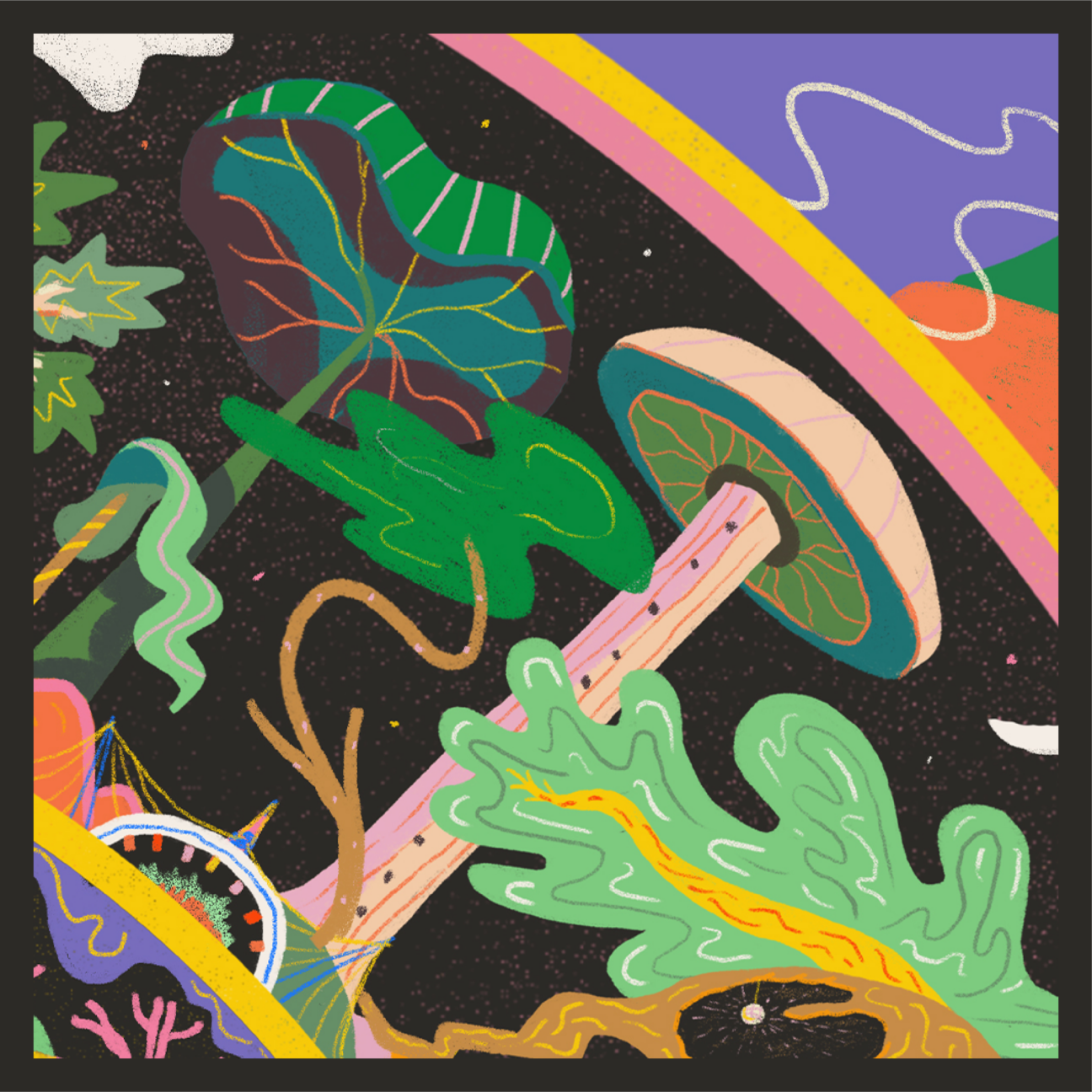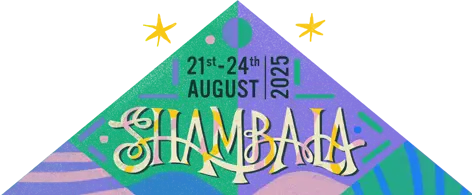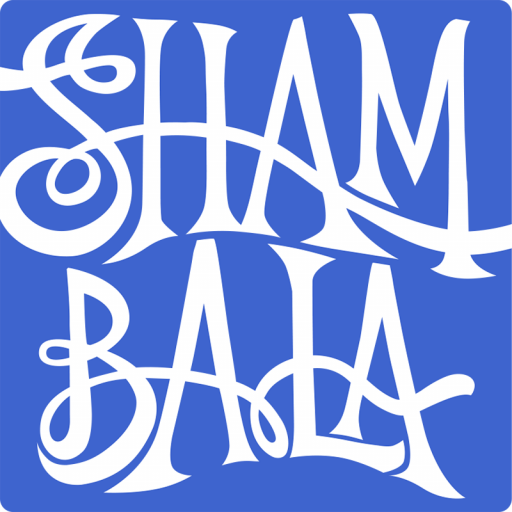We’re over the moon to introduce our artist in residence for Shambala 2023, the wonderfully talented Ed Dingli!
Ed is an illustrator and designer based in Portugal, who’s vibrant work engages with a multitude of socio-political, cultural and environmental causes through both analogue and digital processes. We caught up with Ed to find out more about his work, his inspirations, his process and his love for Shambala…
Describe your artistic style to us…
I mix hand-drawn with digital illustration, using bold bright colour palettes, whimsical shapes and patterns, and occasionally bold graphic elements. My style is continually developing as I’m constantly experimenting with form and technique, but I would say that my tone of voice and inspiration are consistent – I aim to create work that inspires a way of life that’s in harmony with nature.
I use both digital and analogue processes that in turn influence each other, so for example, I’ve been painting with oils recently, and I’ve found that that influences the way I paint digitally too. Everything I create begins in my sketchbook, which is therefore filled with endless doodles, daily life observations, unrealised ideas for projects and lots of nonsense for my own self-amusement really.
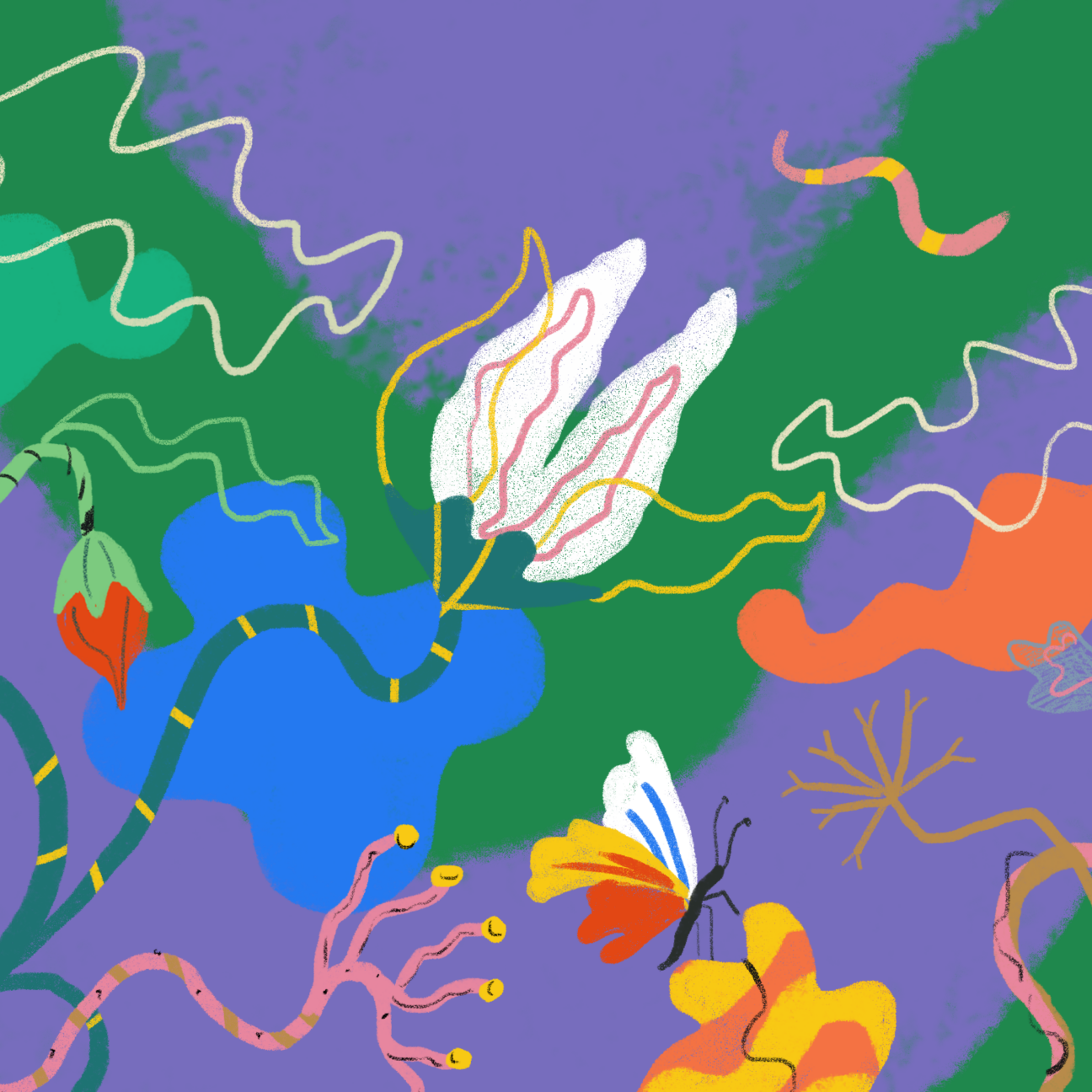
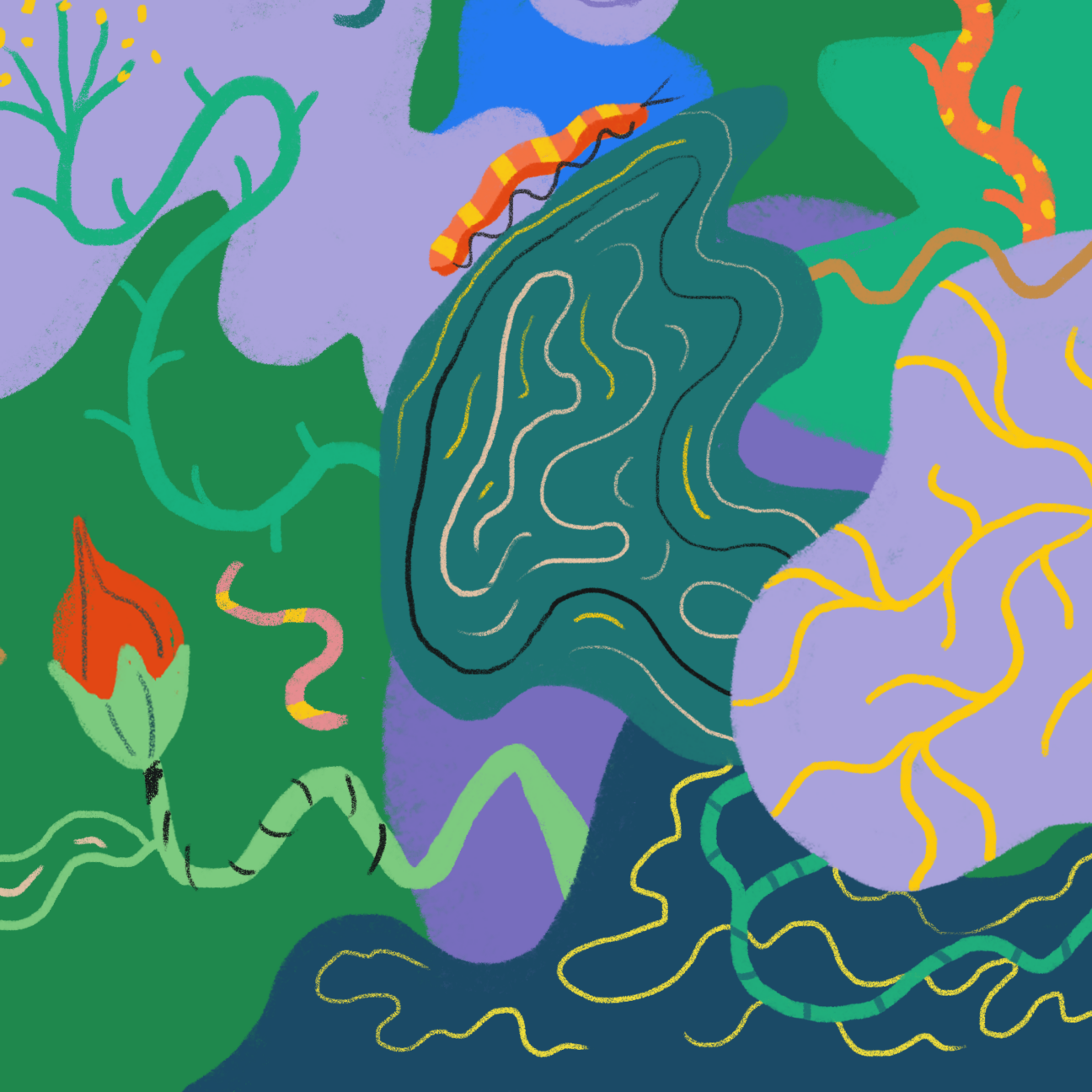
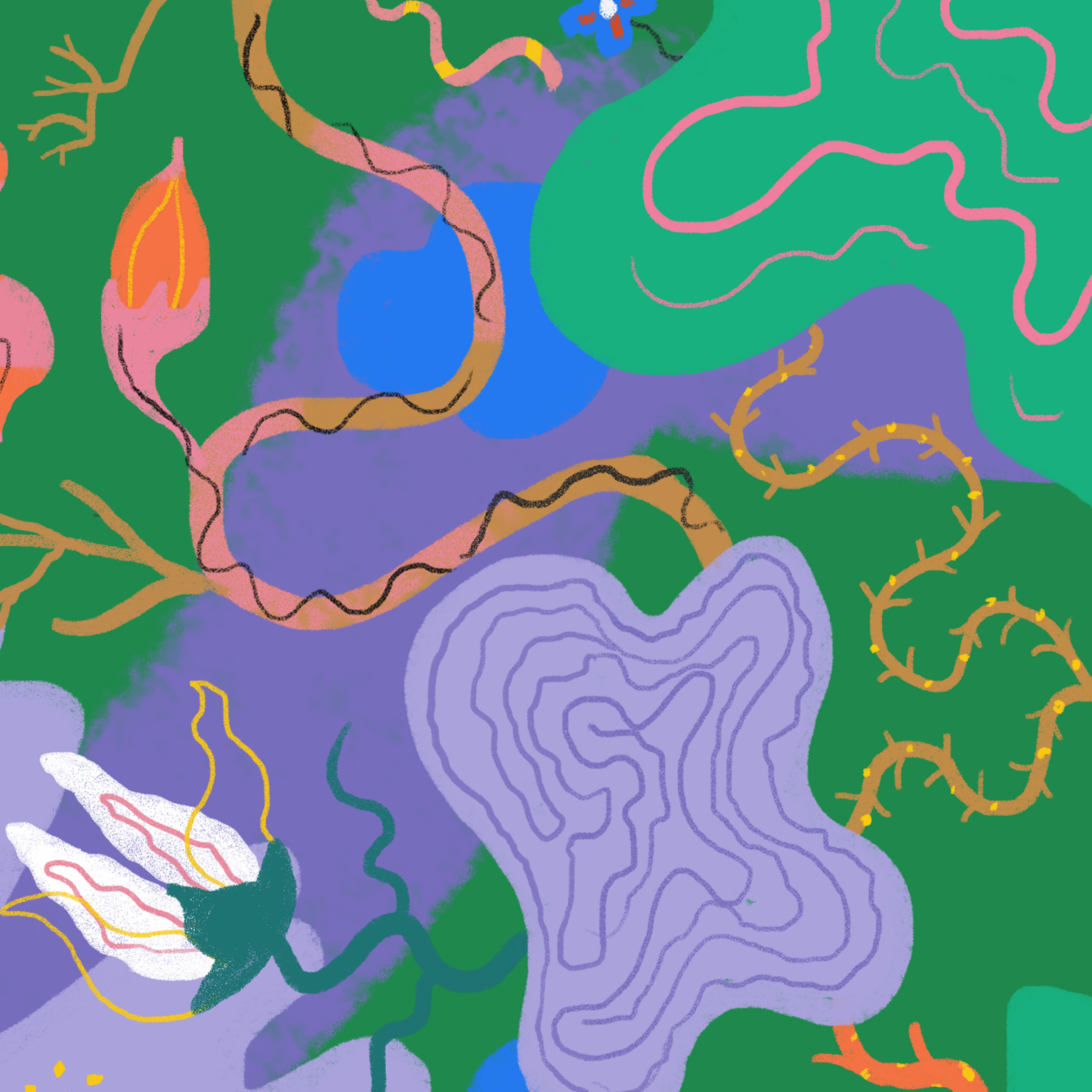
What got you into making art? Any big inspirations?
My first memories of drawing begin early – my nannu (grandfather) had a tiny desk under the stairs, where he’d always keep a pile of scrap paper for me to scribble all over. I’d spend hours drawing up imaginary worlds under the lamplight in that poky corner, and I guess his encouragement gave me the confidence to carry on. So, drawing has been a part of my life ever since I can remember, and I’ve kept sketchbooks since my late teens. I didn’t really have formal training until quite late on though, so I’ve always drawn a bit more freely rather than with technical restraint. This only came when I did a foundation in art & design, & then an undergrad in graphic communication in my early 20s, where I set myself on a path of creating art for purposeful means – political, environmental and often to support activist campaigns or ideas.
“’The idea that design has an impact on society is much more significant to me than design as a selling tool’ – I’ve always resonated with these words by Milton Glaser.”
Otherwise, inspiration comes from many sources, not just art & the history of it, but also the books I read, the people I meet, scenes I witness or the projects I participate in. I spend a fair amount of time involved in permaculture projects and the principles & feeling of working with nature undoubtedly have an influence on my work. More recently, I find the visual representation of early mythology to be very inspiring – the intricacy and colour palettes of Buddhist art, the teachings of Tao, the illuminations of ancient Eastern / Persian art.
You’re a Shambalan yourself! Do you have a favourite memory from a past Shambala?
I am indeed a Shambalan myself! I was so blown away by the beauty, unity, giant-family feeling, incredible music, general silliness & eco-consciousness of the festival that I returned three times. It’s now been a few years (2019) since my last one, and I can’t wait to come back this year. There are so many moments of sheer joy over the years with my Shambalan crew that are so hard to put down in words (mostly because I can’t remember them!).
I do have a very vivid memory of us discovering The Enchanted Woods on our first year there… It was a total surprise on the Friday, the green laser lights shining through the endless twigs and branches, us wading our way through the thick of it and not knowing where we would emerge, only to find a whole secret mystical world – music coming from tree-tops and tents to which we boogied all night. Followed by discovering the warmth of a fire and a soothing chai before the long journey home to find our tent. And having seen so many incredible musicians perform over the years! If I had to pick favourites, Sister Sledge would be the biggest highlight of them all, then discovering Alabaster Deplume (and not missing a gig since), bouncing to K.O.G & the Zongo Brigade, and mosh pitting to Idles!
What inspired this years’ artwork?
The creativity of nature – the force of life that pushes a plant upwards and to sprout into leaves and flowers and trees, defying the relationship between function and form, breaking into a crazy array of lines, forms and colours. Living in the countryside and therefore being constantly surrounded by nature means that every time I go for a walk, I see endless crazy shapes and forms, all in constant change with the seasons. It’s a sense of understanding I’m part of this system – a being on this planet that is constantly spinning on its axis, and the humility and awe that comes from this. To represent this feeling, I decided to draw shapes of flora & fungi from a childlike point of view – a kind of ‘Honey I Shrunk The Kids’ feeling of a tiny being looking up at towering organisms.
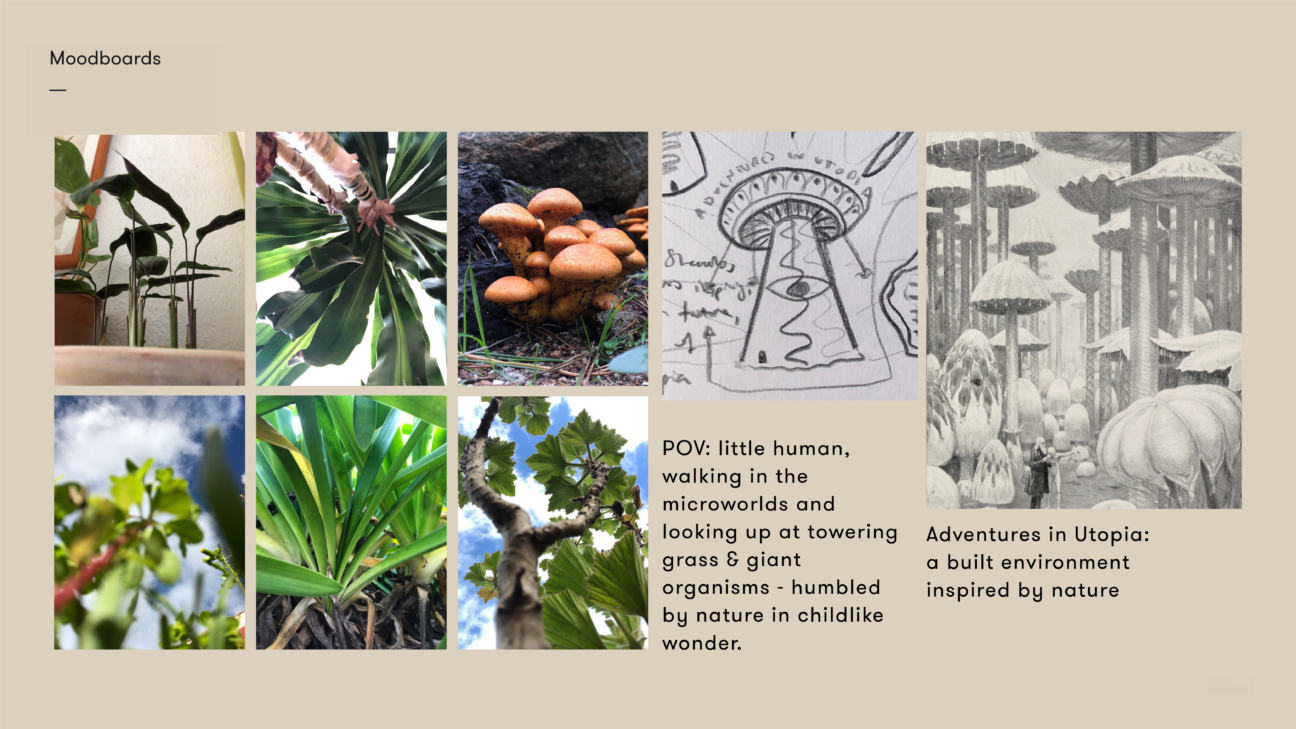
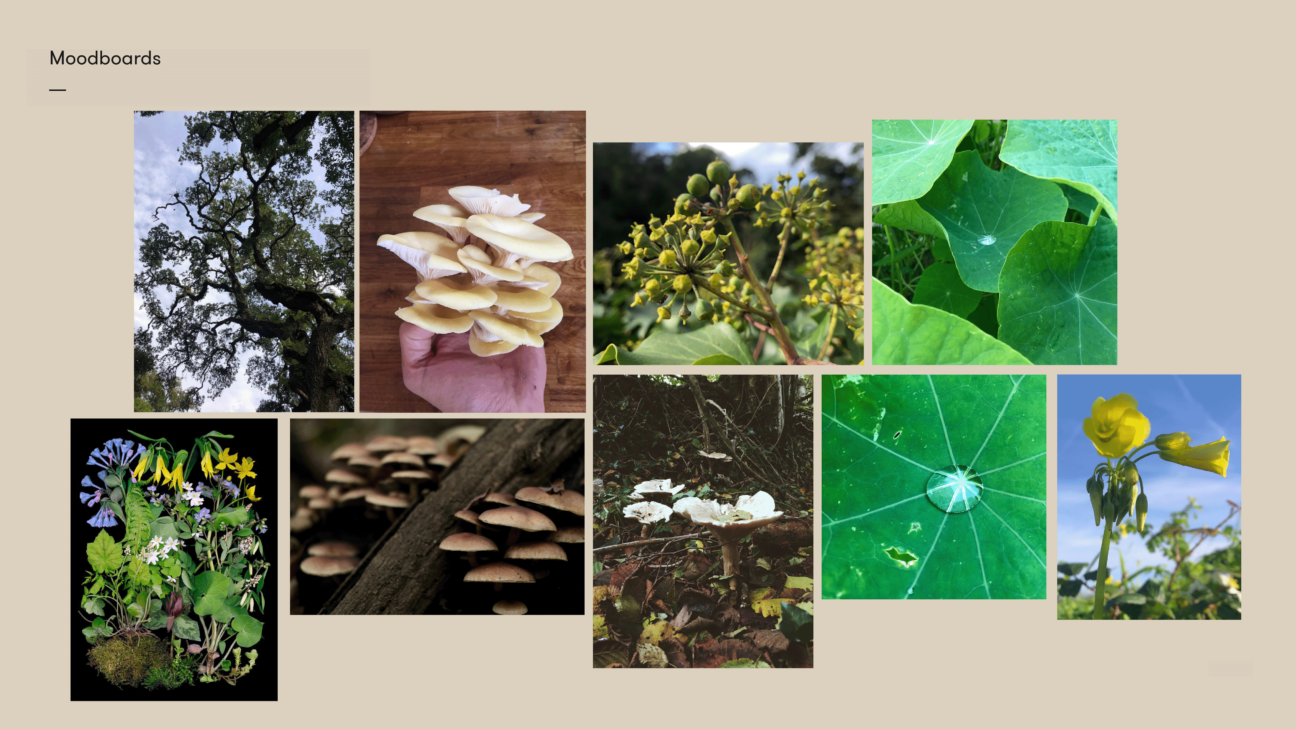
Could you walk us through your design process from start to finish – how do you get started?
It always starts with pencil and paper – putting my first thoughts and ideas into my sketchbook, doing a bit of mind-mapping and allowing myself to branch into any direction.
“I usually sketch thoughts and ideas for days (or weeks, if the time affords it) – I love this part of the process, as it allows time to include inspiration; if I’m out for a walk and come across a crazy shape or organism, or when I’m having idle time and an idea just comes to me.”
I also try to seek varied inspiration that doesn’t come from online doom scrolling – art exhibitions, thrift shops with faded postcards, books on history of art – it’s amazing how when working on a project, I find connections in unexpected places. After I’ve developed my thinking into a series of doodles and drawings, I then create a few thumbnail sketches with a composition in mind. Doing it in thumbnail size means I skip any detail and only pay attention to layout. It’s only then that I begin the digital illustration, with my sketches laid out in front of me so that I can include them in the composition as the scene takes shape.
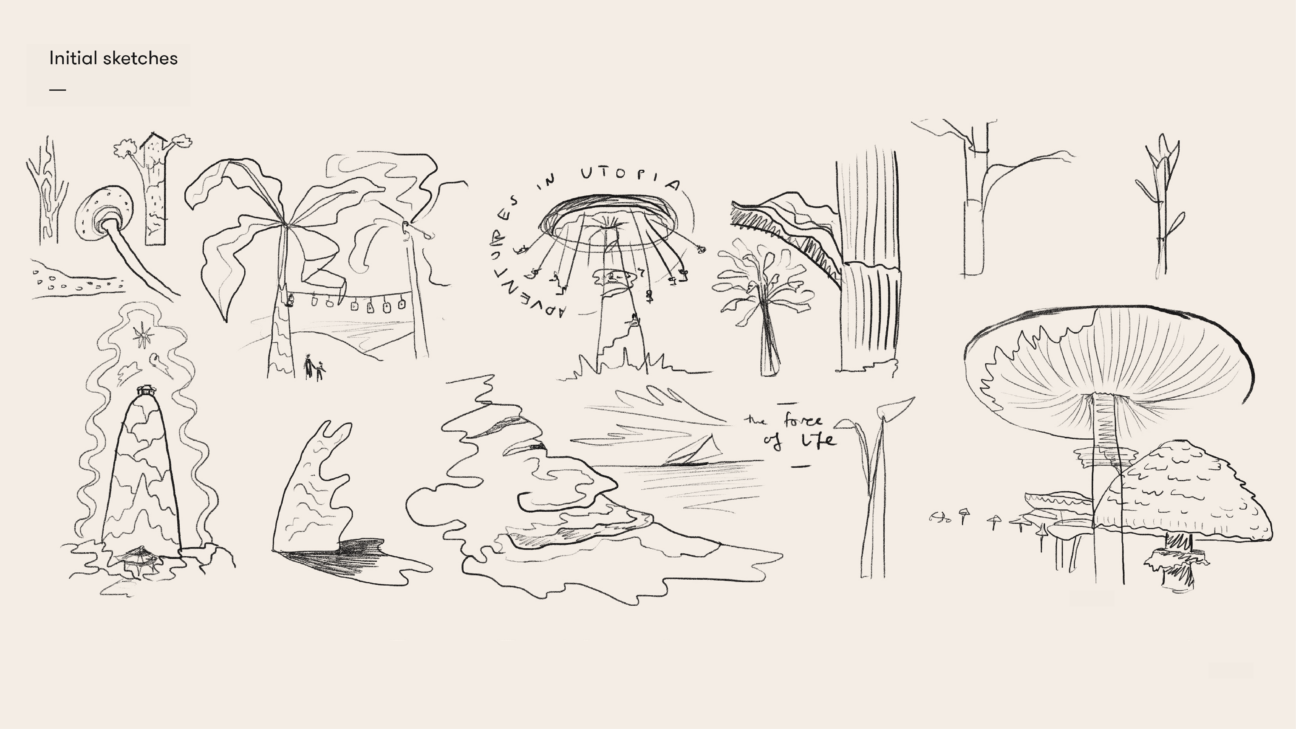
Are there any underlying themes to your work?
‘Adventures in Utopia’ – I took Shambala’s ethos to heart and imagined what living in a utopia would be. To me that’s a built environment that’s not just constructed in harmony with nature, but fully embracing, mimicking, and being it. The macro and the micro, infinite in universal space, and also in the endless micro worlds that exist inside and under every single leaf, shroom, organism.
It’s easy to get consumed (and exhausted) by the hundred and one things the media tells us we should be annoyed at every day.
“But in the gardens, and forests, and rivers, and beaches, life goes on – the birds feed on the fruit, the bees pollinate the buds, the shrooms create mighty networks, the worms work their magic under the earth. Countless daily miracles that we need to be reminded about sometimes.”
